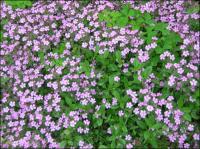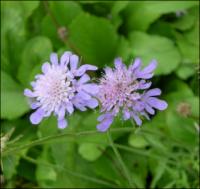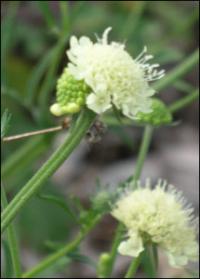Our Plants
Showing 513–520 of 616 results
-
Sanguisorba obtusa Japanese burnet Z 4-9
A confection - neon Barbie-doll pink dangling bottle-brush spikes
OUT OF STOCK
A confection – neon Barbie-doll pink dangling bottle-brush spikes- spectacular- July – September
Size: 2-3’ x 2’
Care: moist to moist well-drained soil in sun
Native: Honschu Japan
Wildlife Value: attracts bees and butterfliesSanguisorba is Latin meaning “to soak up blood”, for the plant’s reputed ability to clot blood. This species collected before 1873.
-
Sanguisorba parviflora syn S tenuifolia var. parviflora, S. tenuifolia var. alba White Japanese burnet Z 4-8
Drooping white spikes (I know, drooping and spike are an oxymoron but you get the idea) atop tall stems and above narrow, dissected foliage. Blooming in July into October.
Drooping white spikes (I know, drooping and spike are an oxymoron but you get the idea) atop tall stems and above narrow, dissected foliage. Blooming in July into October.
Size: 3-5' x 18"
Care: Sun to part shade in moist well-drained soil
Native: Japan, Korea, Mongolia & Russia
Wildlife Value: attracts bees and butterfliesCollected by 1874. (Maxim.)
-
Santolina chamaecyparissus Lavender cotton , Cotton lavender Z 5-9
Grown for its ornamental grey foliage, yellow flowers in midsummer
Grown for its ornamental grey foliage, yellow flowers in midsummer
Size: 20” x 36”
Care: Full sun in well drained soil
Native: Mediterranean area
Awards: Recipient of the Royal Horticulture Society Award of MeritChamaecyparissus means dwarf cypruss to describe its appearance. Shrub grown in English and Italian flower gardens since 1500’s. Italians planted it with other shrubs to form mixed hedges. Grown in American colonial gardens since 1670’s.
-
Saponaria ocymoides Rock soapwort Z 4-9
Cheery pink soapwort, in late spring, hugs the ground
Cheery pink soapwort, in late spring, hugs the ground.
Size: 3" x 18"
Care: Sun, well-drained soil, cut back hard after flowering
Native: Spain to Yugoslavia
Awards: Received England’s Royal Horticultural Society Award of Merit.Both the botanical and common names come from the plant’s use as soap, the leaves “yeelde out of themselves a certain iuice when they are bruised, which scoureth almost as well as sope.” Gerard (1633). Soapwort is still used today by antique and art restorers for its gentle cleaning: chop dried leaves and roots, boil in water for 5 minutes, and then agitate to make suds. William Robinson, father of today’s mixed perennial border gardens, praised this as bearing “masses of rosy blooms.”
-
Scabiosa lucida Pincushion flower Z 4-9
Lilac pincushions all summer & fall
Lilac pincushions all summer & fall, non-stop
Size: 24" x 12"
Care: full sun in well-drained soil.
Native: Central and Eastern Europe
Wildlife Value: attracts butterfliesScabiosa from Latin scabies referring to the itch caused by a mite infestation, which another Scabiosa species allegedly cured. This species 1st described in a French publication in 1779.
-
Scabiosa ochroleuca Cream pincushion Z 4-9
June-October ivory pincushions atop wiry stems
Looking for a non-stop bloomer? June-October ivory pincushions atop wiry stems
Size: 18"-24" x 18"
Care: sun to part shade in moist well-drained soil. Drought tolerant.
Native: Europe & Asia
Wildlife Value: attracts butterfliesThe name scabiosa from Latin scabies refers to the mite infestation that this plant was supposed to cure; ochroleuca means “yellowish white.” First described by Bauhin Caspar in Pinax theatri botanici in 1623.
-
Schizachyrium scoparium syn. Andropogon scoparium Little bluestem Z 3-9
Wispy, feather-like seedheads atop blue-grey foliage that turns plum-orange-red in fall.
Wispy, feather-like seedheads atop blue-grey foliage that turns plum-orange-red in fall
Size: 18" x 12"
Care: sun in well-drained soil.
Native: all No. America
Wildlife Value: leaves food for Skipper butterfly caterpillars and seeds food for songbirdsFirst collected by French plant hunter André Michaux in America’s prairies c. 1790. Comanche used it to remedy syphilitic sores. Lakota made soft, wispy seedheads into liners for moccasins.
-
Scrophularia macrantha syn. Scrophularia coccinea Redbirds in a Tree, Mimbres figwort Z 5-10
This sub-shrub blooms from early summer until frost with white-lipped cherry-red, tubular flowers that look like a flock of inch-long, baby birds with open mouths waiting for food, each topping short stems along the branches. The margins of its oval green leaves are toothed.
OUT OF STOCK – EMAIL FOR AVAILABILITY
This sub-shrub blooms from early summer until frost with white-lipped cherry-red, tubular flowers that look like a flock of inch-long, baby birds with open mouths waiting for food, each topping short stems along the branches. The margins of its oval green leaves are toothed.
Size: 2-4’ x 18”
Care: sun to part shade in well-drained to moist well-drained soil. Little to no fertilizer.
Native: Three mountain tops in southern New Mexico (high elevations make it hardy to cold regions)
Wildlife Value: Its nectar is one of the best feeders and attractors for hummingbirds. Pollen and nectar also attract butterflies and bees.
Awards: 2008 Plant Select WinnerFirst collected on the Mexican Boundary Expedition by Charles Wright (1811-1885) and John Bigelow (1804-1878), “at the base of a rocky ledge near the summit of a mountain . . .a truly handsome species.” Described by Asa Gray, Torrey, John ed. Report on the United States and Mexican boundary survey Vol. 2 p. 111 (1859)






